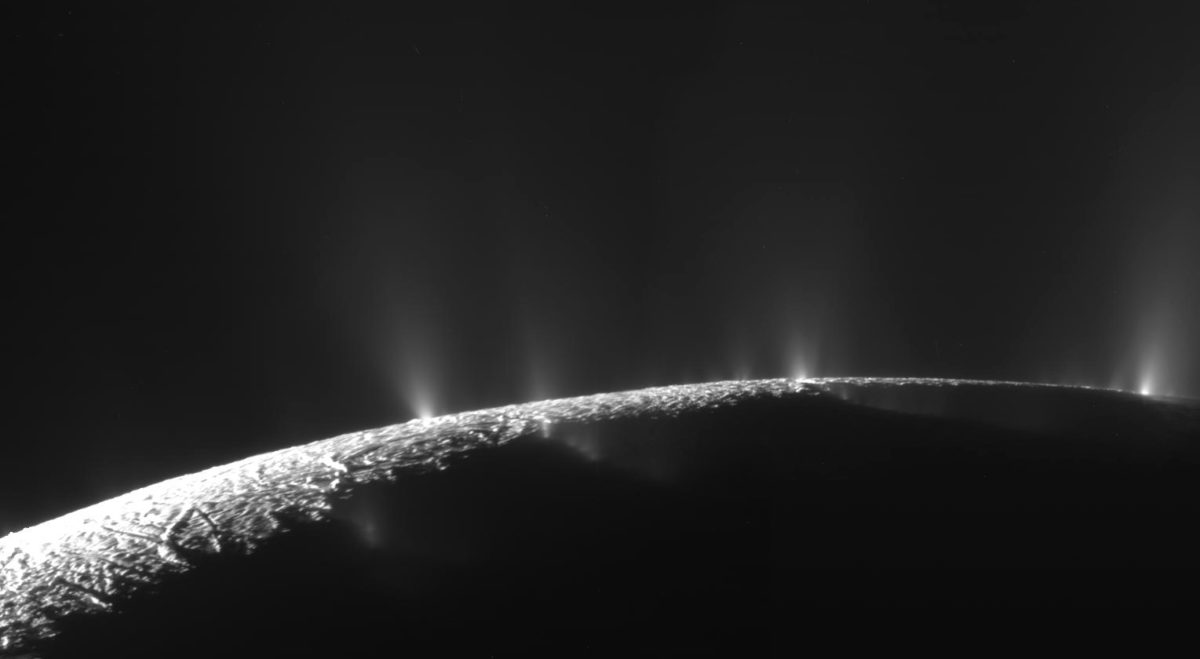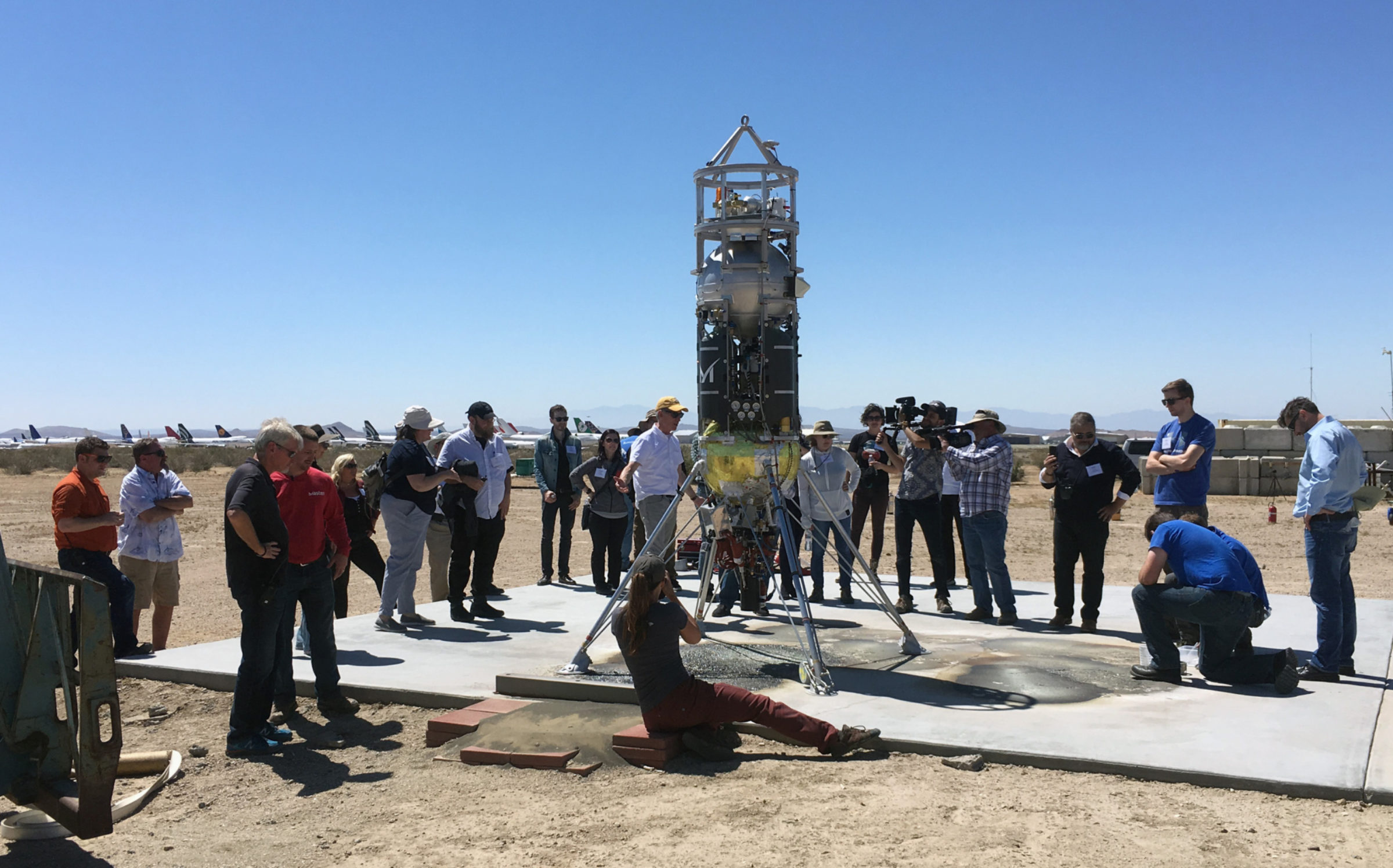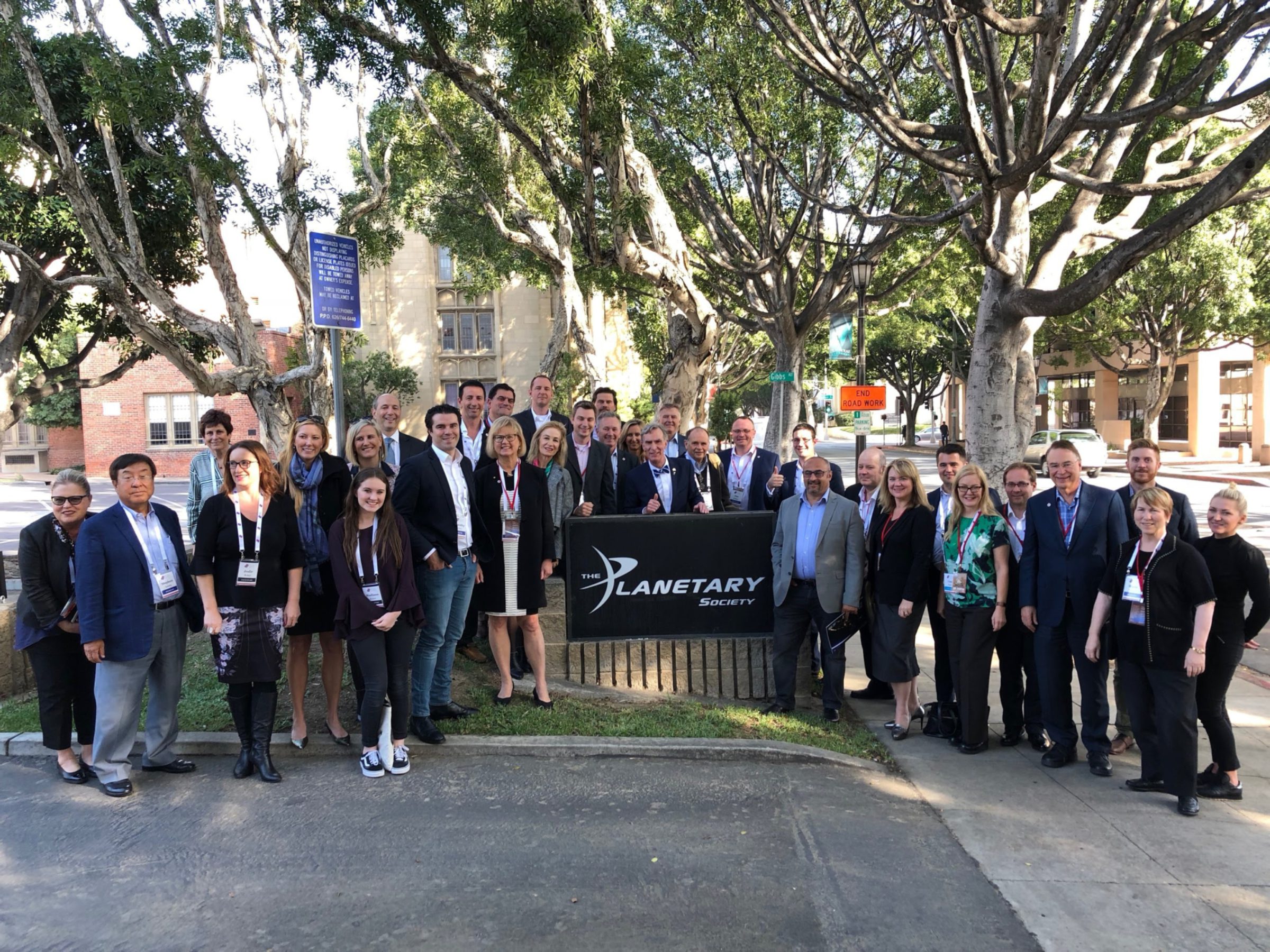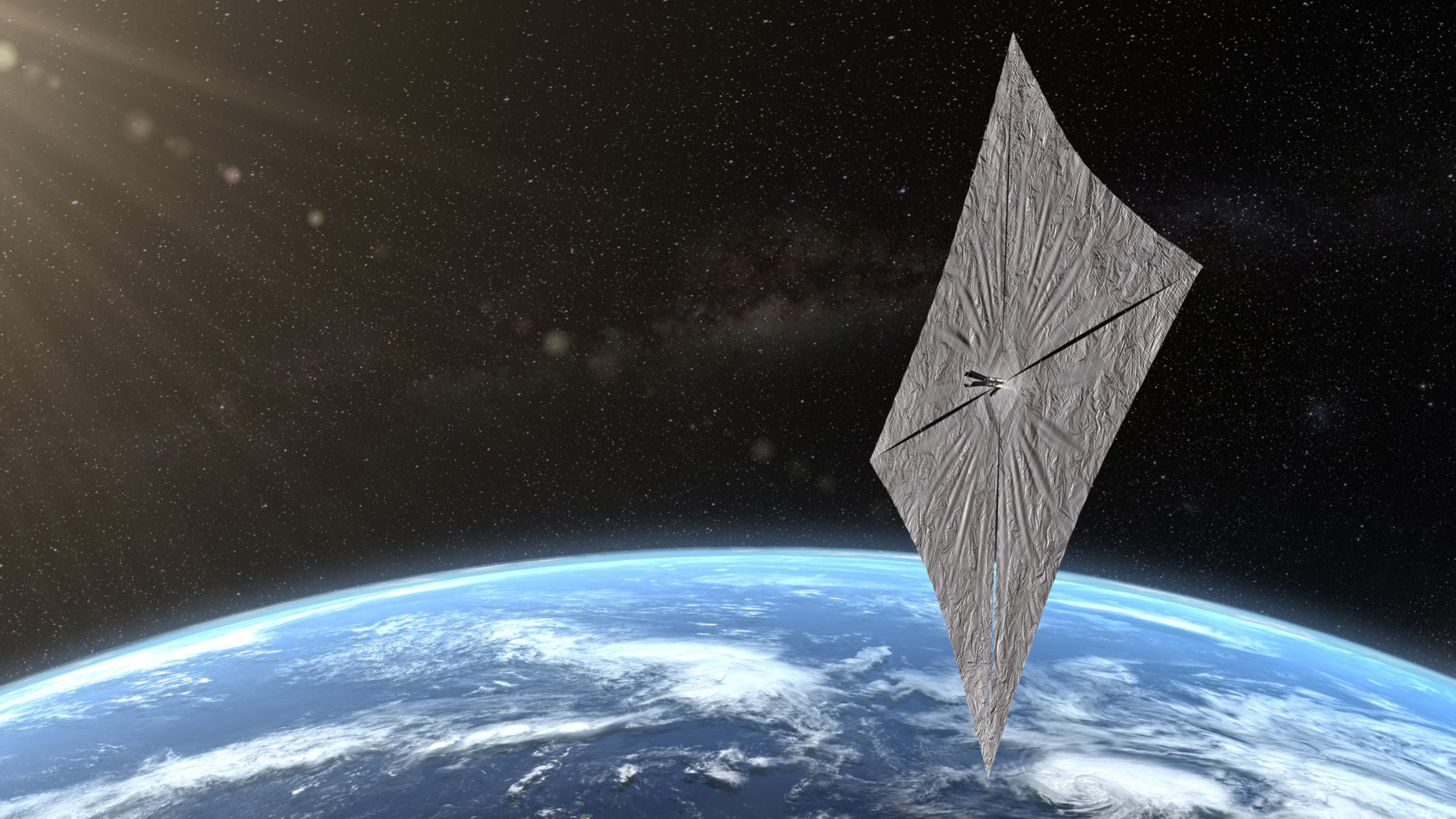
On the Cover: So far, Mercury has been visited by only two spacecraft. This enhanced-color mosaic of Mercury was assembled by Ted Stryk from many individual frames taken by Mariner 10 as it departed Mercury after its first flyby on March 29, 1974. The subtle colors weren’t visible in contemporary versions of the mosaic; returning to it with modern digital image processing, Stryk found orange, purple, and brown shades in the color data.
Download PDF
CONTENTS
Bill Nye reports on his very busy Summer 2018, and pledges to extend the Society’s influence.
Cover Story
Voyage to Mercury
Elsa Montagnon details the challenges of delivering BepiColombo’s two spacecraft from Earth to Mercury.
Volunteer Spotlight
Stargazing Down Under
Nyssa Lonsdale celebrates Australian volunteers who are spreading the word about space exploration.
Long Xiao previews two ambitious Chinese lunar missions, one of which will make the first-ever landing on the far side of the Moon.
Sriram Bhiravarasu anticipates India’s 2019 lunar venture with an orbiter, lander, and rover.
Developments in Space Science
Successful Trip
Bruce Betts reports on a ground-breaking test of PlanetVac’s capabilities in the California desert.
Advocating for Space
Why Start a Space Program?
Casey Dreier observes the genesis of a new space agency in Australia, and how The Planetary Society helped make it happen.
Four planets and the Geminid meteor shower will grace Earth’s skies this quarter.
Emily Lakdawalla introduces an at-a-glance spacecraft locator to The Planetary Report.
Richard Chute invites members to join us in Florida.
Letter from the Editor
Emily Lakdawalla is The Planetary Society’s senior editor and planetary evangelist.
Dear loyal members of The Planetary Society,
It is my great pleasure to accept editorial responsibility for The Planetary Report. I’m honored to pick up the red pen formerly held by Charlene Anderson, Jennifer Vaughn, and Donna Stevens.
I look forward to the challenge of meeting the high standard set by Donna. For nearly 30 years, she dedicated herself to showing off the beauty of space exploration in The Planetary Report’s pages and on its covers. She has always been thoughtful, precise, and deeply invested in getting every detail right. I want to thank Donna for her mentoring during the last 6 months. My goal is to achieve a similar balance of editorial and aesthetic quality in the magazine.
I have served The Planetary Society since 2001, first as your science and technology coordinator and later as your senior editor and planetary evangelist. In 2004, Charlene, then editor of both The Planetary Report and planetary.org, put me to work writing about Cassini-Huygens for the website. It was my first of many science-writing beats.
The transition wasn’t seamless; my recent academic training as a planetary geologist had made my writing stilted, convoluted, and dull. I credit Charlene with training me to write for the public. She peppered her advice with anecdotes about the arguments she’d had with Carl Sagan about grammar and style. (As one example, she told me that Carl disliked the word “stuff,” demanding more precise language instead. I’ve always found that funny, since I can hear him quite clearly in my head saying “We are made of star stuff.”) After 2 years under Charlene’s tutelage, I was freed to exercise editorial control over the website, a duty I’ve fulfilled ever since.
All of which is to say: I’m steeped in Planetary Society history and plan to carry on the established, successful format of bringing the voices of Earth’s planetary explorers directly to you. At the same time, I’ve been charged with the task of reexamining The Planetary Report and bringing the magazine and the website closer together, unifying our messages and storytelling across media. Longtime readers will notice some changes to our style in this issue, and you’ll see other changes in the months and years ahead. I and the rest of us at The Planetary Society welcome your feedback and suggestions for both the magazine and the website. Please don’t hesitate to contact us at [email protected].
Sincerely,
Emily Lakdawalla

Your Place in Space: On Orbits and Org Charts
Putting Membership Dollars to Work Across the Globe
Bill Nye is chief executive officer of The Planetary Society.
To answer the traditional question “What did you do on your summer vacation?,” here at The Planetary Society, we got ready to launch LightSail 2. It’s a little bit difficult to describe how much this next mission means to the Society and to me. Three years ago, we managed to fly LightSail 1. It was a big success, but there are even better things ahead. Our second solar sail mission could launch as early as November from Cape Canaveral. We do not yet have a specific launch date, but once we do, we’ll share it with you on our website and via email. I hope many of you will consider a trip to Cape Canaveral for the launch. It’ll be historic and spectacular.
Our small solar sail spacecraft will be atop a Falcon Heavy rocket, the vehicle’s second-ever flight. Our LightSail 2 spacecraft is far more capable than its predecessor. We will get to a higher orbit than we could with LightSail 1. Because we will maneuver with each orbit, add kinetic energy, and gain orbital altitude, LightSail 2 will be flying and visible for many months. This is a dream of our founders; it goes back to the 1970s, even before they created The Planetary Society. But it’s you—and tens of thousands of other Planetary Society members and supporters—who funded this dream and made it a reality.
Every time I think of it, I am delighted that well over half of you reading along here joined the Society (and thank you for that) many years after our solar sail projects got underway. What an exciting time to join the world’s largest space team! Maybe you joined to support LightSail or one of our other citizen-funded technology projects, like PlanetVac; maybe you appreciate learning about planetary exploration through The Planetary Society’s blogs, podcasts, and The Planetary Report; or perhaps you were inspired to advocate for more missions, more science, and more discoveries. The Planetary Society exists to connect you to space. That’s our business, and we’re proud to see this community of passionate explorers expand.
No matter where you live on Earth’s surface, you are probably aware of the extraordinary political events that have transpired in the United States. It’s important to keep in mind, though, that the regular processes of the U.S. government keep ticking and grinding away. A very large fraction of the U.S. Congress may change from conservative to progressive or progressive to conservative in the midterm election in November of this year. This could have far-reaching effects on the world’s largest space agency, NASA, and other space agencies around the world. Your advocacy team is positioned to establish and maintain relationships with the many new politicians and staffers who will be coming to Washington, D.C.
While these significant programs grow and move apace, we have been working to develop and solidify our goals and objectives over the next 5 years. We want to expand our role in Washington, Paris, Tokyo, Ottawa, Johannesburg, and Canberra. Someday, I’d like us to have volunteers and good relations with space enthusiasts in Baikonur and Beijing. In short, we want more people to be more engaged and more connected to space exploration. Our growth and growth in influence is important to us as an organization. It’s important to me as your CEO, and it’s especially important to me as a citizen of this world. I want humankind to be completely capable of detecting and then deflecting an asteroid or comet headed for our orbit. I very much want us as a species to conduct a robust, reasonably priced search for life—or even survey of life—in our solar system and beyond. We can do this because of you.
As the guy at the top of our organization, I often reflect on the “org” chart. As a young engineer, I fit in somewhere on an org chart in various aerospace companies. Right now, my box would likely be shown at the top of the page (with the Board of Directors staring down from above). For us here at your Planetary Society, you are at the top. You as a member drive this organization. We work to connect you with space exploration, and together we’re working to ensure that everyone everywhere will one day have a hand in directing our future in space. I hope you’ll write to me and to us here at The Planetary Society. Where should we be heading? What’s your favorite place in space? What matters most to you?
Let’s go!
Bill Nye

Voyage to Mercury
The BepiColombo Mission Prepares for Launch
Supporting A New Space Agency
Planetary Society Volunteers Maintain Momentum in Australia
Kate Howells is The Planetary Society’s global community outreach manager.
As the Australian space sector heats up, The Planetary Society’s volunteers are building a thriving outreach network to match. Our volunteer coordinator for Australia, Nyssa Lonsdale, reports on how The Planetary Society is reaching out to communities across the country to build nationwide support for space.
The long-awaited establishment of the Australian Space Agency has awoken a renewed sense of exuberance within national and international science communities. The Australian Space Agency plans to support our commercial space industry, maintain international partnerships, and enhance our reputation for leadership in the space sciences and radio astronomy. It also stands importantly as inspiration for the next generation of researchers, scientists, and engineers.

Growing numbers of Planetary Society volunteers are appearing at local Astrofest events to provide physics demonstrations and to raise the profile of space science within the public community. For many of us, promoting astronomy to youth and tackling their inventive questions is the most fulfilling aspect of outreach.
Recently, more than 40,000 people in Australia declared their interest in astronomy in a nationwide endeavor that toppled the Guinness world record for the most people stargazing simultaneously. At the helm were the Australian Broadcasting Corporation and the Australian National University, both of which teamed with astronomy clubs to provide telescopes for the evening. Our members and volunteers championed this event. It was a delight to see so many families captivated by the stars.
Volunteers can have a positive impact on the long-term sustainability of the Australian Space Agency. We can encourage public support and awareness, connect graduates to space careers, and pair science professionals with students. I am delighted to be a part of The Planetary Society’s united effort to fuel the imagination of the public and promote Australia’s place in space.
Farside Landing and Nearside Sample Return
China’s New Lunar Missions Are on the Way
Chandrayaan-2
India’s Big Step in Lunar Exploration

Successful Trip
A Planetary Vacuum Takes a Rocket Ride
Bruce Betts is chief scientist for The Planetary Society.

Rocket science met planetary science in the California desert when Honeybee Robotics tested PlanetVac, a new planetary surface sampling technique, on a Masten Space Systems Xodiac rocket. During the 24 May test, the Xodiac rocket lifted off, hovered, moved slightly, and then landed PlanetVac in a bed of Mars soil simulant. PlanetVac gathered hundreds of grams of sample, and the rocket lifted off again, moved, and landed. This test advanced The Planetary Society-supported project one step closer to flying in space.

WHAT IS PLANETVAC?
PlanetVac (Planetary Vacuum) is intended for robotic sample collection from planetary surfaces. PlanetVac uses compressed gas to force dirt and small rocks up into a sampling container or science instrument. It can take advantage of supplies of compressed gas that are usually on landers already (the landers use the gas to pressurize their fuel tanks). PlanetVac sampling devices could be built into the lander legs themselves, as we did in the May tests.
The technology could be used to feed surface dirt to science instruments and/or feed it into sample return rockets on landers on Mars, asteroids, or the Moon. Because of the low pressures on all those bodies, the technique is extremely efficient. The efficiency is related to the ratio of the pressure of the gas used to the ambient pressure. Its use of only one moving part—a valve to release the gas—makes it reliable, and its relatively low mass and cost are big pluses in the planetary exploration game.
In 2013, Planetary Society members funded early tests of PlanetVac in a vacuum chamber at Mars pressures. The test was successful, showing that a full prototype could be constructed and operated successfully in a low-pressure environment.

PLANETVAC XODIAC
NASA sponsored the Xodiac rocket flight through its Flight Opportunities program. Planetary Society members and donors came together to provide the additional funding needed for Honeybee Robotics to adapt PlanetVac to the Xodiac. This involved creating a version of PlanetVac that would replace one of the Xodiac lander’s feet.
Several Planetary Society staff members and PlanetVac donors had the opportunity to witness one of the test flights. The flight took place at the Mojave Air and Space Port in the southern California desert. The rocket launch was a spectacular sensory experience with a magnificent rocket plume and big sound. Half a minute later, it landed a few meters away with the PlanetVac leg in the Mars simulant. Sampling itself took only 10 seconds. The rocket flew back to its starting point and landed.

Honeybee engineers were very excited when they retrieved the sampling container. They had targeted 100 grams (3.5 ounces) of sample but actually obtained more than 300 grams (more than 10.5 ounces). It was a big success and a great experience.

The activity demonstrated that PlanetVac could be adapted to a planetary lander, in this case replacing a landing foot of a Xodiac rocket. It also demonstrated that PlanetVac could survive and thrive in the hot, shaking environment of a rocket firing. The successful demonstration advanced the technology’s readiness for a future space flight, making PlanetVac more likely to be selected to fly on future space missions.
Thanks to all of The Planetary Society supporters and members who made this possible! You can learn more about PlanetVac Xodiac and watch a video covering its flight at planetary.org/planetvac. You can also listen to a Planetary Radio episode covering the event at planet.ly/PlanetVacPlanRad.
Why Start A Space Program?
Watching Australia Take A Bold Step Forward

What's Up?
by Bruce Betts
IN THE SKY
In the early evening in late September and into October, 4 planets can be seen stretching across the sky. Bright Venus is very low in the west, getting lower as days pass. Jupiter is above Venus. Farther east in the sky are yellowish Saturn and Mars. Mars is bright but fades as the weeks pass and it grows farther from Earth in its orbit. At the end of October, Mercury is near Jupiter, low in the west shortly after sunset. Soon into November, both have left the evening sky, but Saturn and Mars remain there. By November, Venus is in the pre-dawn east and is joined by Mercury and then Jupiter in December. The Geminids meteor shower peaks on 13 and 14 December. The best viewing will be after midnight, when the Moon has set. Often the best meteor shower of the year, 100 meteors per hour may be seen from a dark site.
RANDOM SPACE FACT
If you lived on Mercury (not recommended), one Mercury day would last two Mercury years.
TRIVIA CONTEST
Our March Equinox contest winner is Mike Shaw of Edmonds, Washington. Congratulations! The question was: Which planet in our solar system has the highest average density?
The answer: Earth at 5.515 grams per cubic centimeter. Mercury is 5.427 grams per cubic centimeter.
Try to win a Planetary Society Venn Diagram tee and a signed copy of Emily Lakdawalla’s book, The Design and Engineering of Curiosity, by answering this question:
What was the first human-made object to hit another world besides Earth?
E-mail your answer to [email protected] or mail your answer to The Planetary Report, 60 S. Los Robles Ave., Pasadena, CA 91101. Make sure you include the answer and your name, mailing address, and e-mail address (if you have one). By entering this contest, you are authorizing The Planetary Report to publish your name and hometown. Submissions must be received by November 1, 2018. The winner will be chosen in a random drawing from among all the correct entries received.
For a weekly dose of “What’s Up?” complete with humor, a weekly trivia contest, and a range of significant space and science-fiction guests, listen to Planetary Radio at planetary.org/radio.
Where We Are
An At-A-Glance Spacecraft Locator

LightSail 2 Launch – You’re Invited!

As we go to print on The Planetary Report, LightSail 2’s launch date is set for no earlier than 30 November, 2018. All members are invited to join us at Kennedy Space Center to experience Planetary Society history being made. Details are still being finalized, but we will offer members a number of opportunities that may include meet-up-style meals at local restaurants, a members-only mission briefing, and access to tickets to see the launch from the Kennedy Space Center Visitor Center. Our family-friendly events will be scheduled over a 2-day period.
For more information and tips on launch viewing, go to sail.planetary.org. Can’t wait for November and want to grab some LightSail 2 swag now? Head over to planetary.org/store to check out T-shirts, patches, pins, and more.
The Planetary Report • September Equinox 2018
Help advance space science and exploration! Become a member of The Planetary Society and you'll receive the full PDF and print versions of The Planetary Report.


 Explore Worlds
Explore Worlds Find Life
Find Life Defend Earth
Defend Earth

